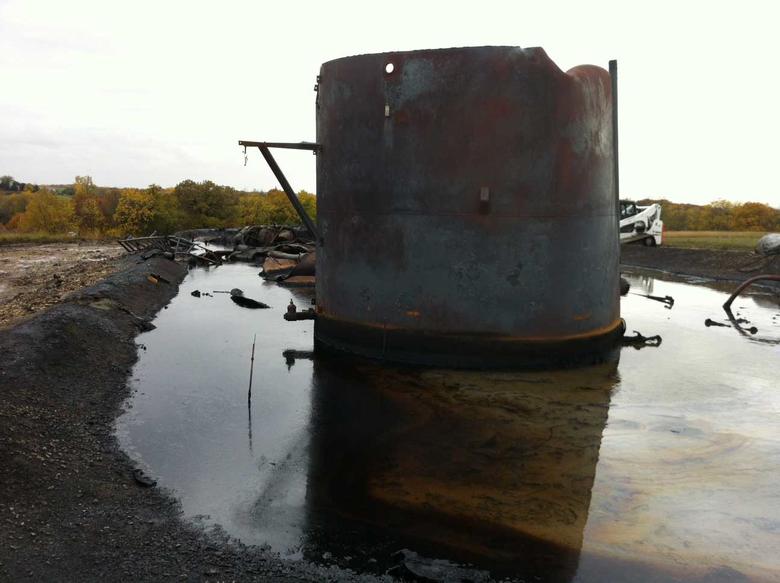
OIL PRICES: $42 - $52

According to EIA
Crude Oil Prices
The monthly average spot price of Brent crude oil increased by $1/b in August to $46/b. Despite continued increases in global oil inventories and U.S. oil rig counts, market reactions to a potential OPEC deal to freeze production at current levels put upward pressure on prices in August.
EIA expects global oil inventory builds to continue in the near future, averaging 0.6 million b/d in the second half of 2016, but the builds are forecast to remain well below the levels that occurred in 2015 and early 2016. Although the pace of inventory builds is slowing, continuing builds and high inventory levels will likely contribute to Brent prices maintaining the recent $40/b to $50/b trading range during the next two quarters. EIA forecasts Brent prices to average $45/b during the fourth quarter of 2016 and first quarter of 2017, acknowledging that global economic developments and geopolitical events in the coming months have the potential to push oil prices near the top or bottom of the $40/b to $50/b range.
EIA expects global oil inventory draws to begin in mid-2017. The expectation of inventory draws contributes to rising prices in the second quarter of 2017, with price increases continuing later in 2017. Brent prices are forecast to average $52/b in 2017. Forecast Brent prices average $58/b in the fourth quarter of 2017, reflecting the potential for more significant inventory draws beyond the forecast period.
Average West Texas Intermediate (WTI) crude oil prices are forecast to be $1/b lower than Brent prices in 2016 and 2017. The slight price discount of WTI to Brent in the forecast is based on the assumption of competition between the two crudes in the U.S. Gulf Coast refinery market.
The current values of futures and options contracts highlight the heightened volatility and high uncertainty in the oil price outlook (Market Prices and Uncertainty Report). WTI futures contracts for December 2016 delivery that were traded during the five-day period ending September 1 averaged $47/b, and implied volatility averaged 37%. These levels established the lower and upper limits of the 95% confidence interval for the market's expectations of monthly average WTI prices in December 2016 at $34/b and $65/b, respectively. The 95% confidence interval for market expectations widens over time, with lower and upper limits of $25/b and $104/b for prices in December 2017. At this time in 2015, WTI for December 2015 delivery averaged $48/b, and implied volatility averaged 47%, with the corresponding lower and upper limits of the 95% confidence interval at $32/b and $73/b
Natural Gas Prices
The Henry Hub natural gas spot price averaged $2.82/million British thermal units (MMBtu) in August, unchanged from the July average. A hot summer and production declines have put some upward pressure on natural gas prices, although prices remain low enough to support significant natural gas-fired generation. EIA expects natural gas prices to gradually rise through the forecast period. Forecast Henry Hub prices average $2.42/MMBtu in 2016 and $2.87/MMBtu in 2017.
Natural gas futures contracts for December 2016 delivery that were traded during the five-day period ending September 1 averaged $3.18/MMBtu. Current options and futures prices indicate that market participants place the lower and upper bounds for the 95% confidence interval for December 2016 contracts at $2.25/MMBtu and $4.51/MMBtu, respectively. In early September 2015, the natural gas futures contracts for December 2015 delivery averaged $2.91/MMBtu, and the corresponding lower and upper limits of the 95% confidence interval were $2.08/MMBtu and $4.06/MMBtu.
Global Petroleum and Other Liquid Fuels Consumption
Global consumption of petroleum and other liquid fuels is estimated to have grown by 1.4 million b/d in 2015. EIA expects global consumption to increase by 1.5 million b/d in 2016 and by 1.4 million b/d in 2017, mostly driven by growth in countries outside of the Organization for Economic Cooperation and Development (OECD). Non-OECD consumption growth was 0.9 million b/d in 2015, and it is expected to be 1.2 million b/d in 2016 and 1.3 million b/d in 2017.
India and China are expected to be the largest contributors to non-OECD petroleum consumption growth, with each country's consumption forecast to increase between 0.3 million and 0.4 million b/d annually in both 2016 and 2017. In India, consumption growth is mainly a result of increased use of transportation fuels and of naphtha for new petrochemical projects. China's growth in consumption of petroleum and other liquid fuels is driven by increased use of gasoline, jet fuel, and hydrocarbon gas liquids (HGL), which more than offsets decreases in diesel consumption. Last year's significant rise in the use of HGL in China will continue through the forecast period, as new propane dehydrogenation (PDH) plants increase the use of propane.
OECD petroleum and other liquid fuels consumption rose by 0.5 million b/d in 2015. OECD consumption is expected to increase by 0.2 million b/d in 2016 and by 0.1 million b/d in 2017.
-----
Earlier:









